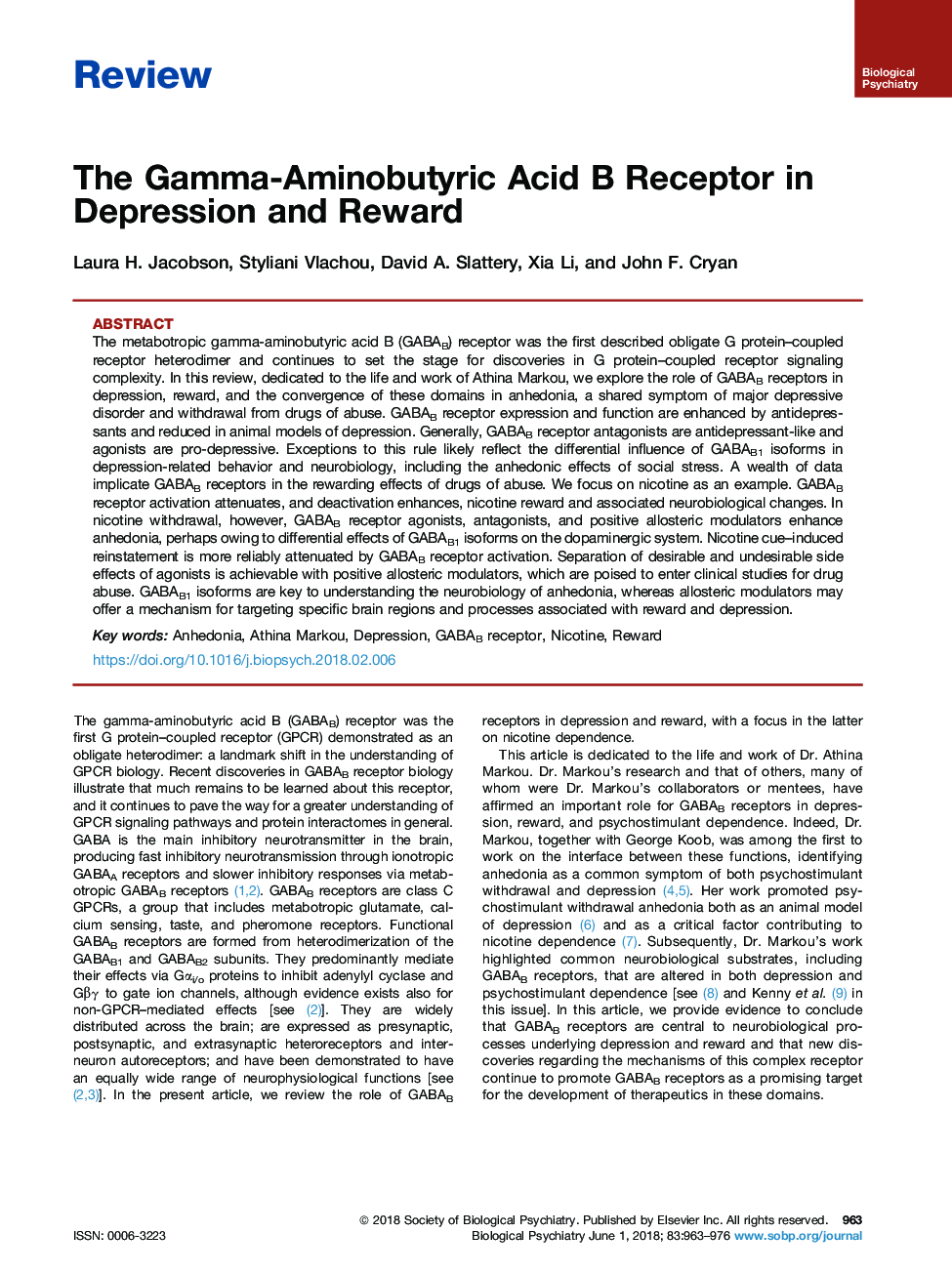| Article ID | Journal | Published Year | Pages | File Type |
|---|---|---|---|---|
| 8813979 | Biological Psychiatry | 2018 | 14 Pages |
Abstract
The metabotropic gamma-aminobutyric acid B (GABAB) receptor was the first described obligate G protein-coupled receptor heterodimer and continues to set the stage for discoveries in G protein-coupled receptor signaling complexity. In this review, dedicated to the life and work of Athina Markou, we explore the role of GABAB receptors in depression, reward, and the convergence of these domains in anhedonia, a shared symptom of major depressive disorder and withdrawal from drugs of abuse. GABAB receptor expression and function are enhanced by antidepressants and reduced in animal models of depression. Generally, GABAB receptor antagonists are antidepressant-like and agonists are pro-depressive. Exceptions to this rule likely reflect the differential influence of GABAB1 isoforms in depression-related behavior and neurobiology, including the anhedonic effects of social stress. A wealth of data implicate GABAB receptors in the rewarding effects of drugs of abuse. We focus on nicotine as an example. GABAB receptor activation attenuates, and deactivation enhances, nicotine reward and associated neurobiological changes. In nicotine withdrawal, however, GABAB receptor agonists, antagonists, and positive allosteric modulators enhance anhedonia, perhaps owing to differential effects of GABAB1 isoforms on the dopaminergic system. Nicotine cue-induced reinstatement is more reliably attenuated by GABAB receptor activation. Separation of desirable and undesirable side effects of agonists is achievable with positive allosteric modulators, which are poised to enter clinical studies for drug abuse. GABAB1 isoforms are key to understanding the neurobiology of anhedonia, whereas allosteric modulators may offer a mechanism for targeting specific brain regions and processes associated with reward and depression.
Related Topics
Life Sciences
Neuroscience
Biological Psychiatry
Authors
Laura H. Jacobson, Styliani Vlachou, David A. Slattery, Xia Li, John F. Cryan,
